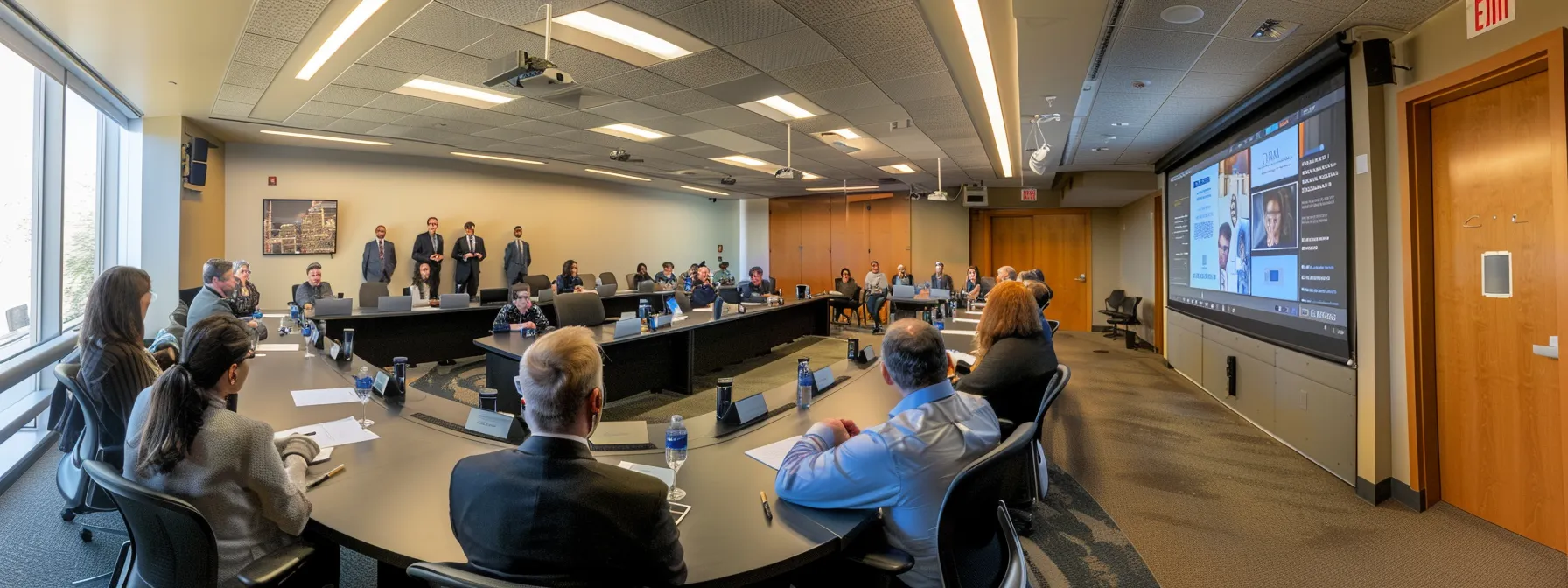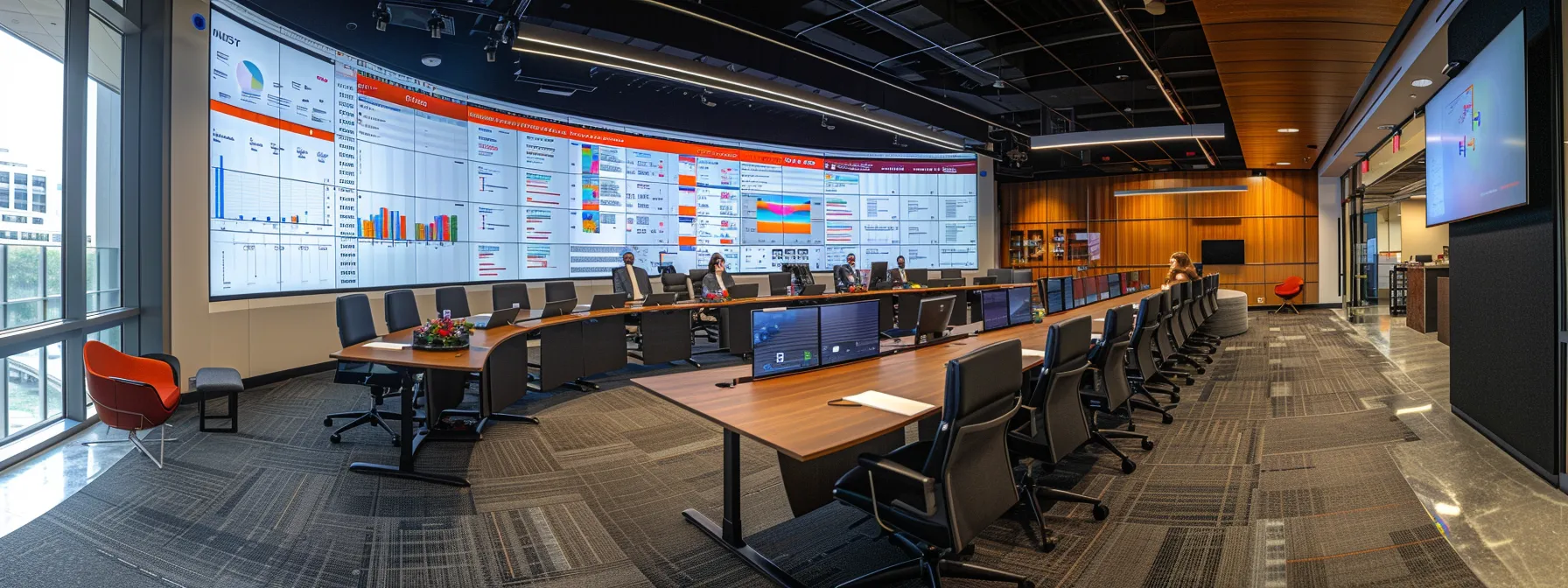
CMMC Changes: What Do They Mean for Your Business?
Understanding the changes in the Cybersecurity Maturity Model Certification (CMMC) is crucial for businesses aiming to secure government contracts. The latest updates may seem daunting, but they provide clear guidelines to enhance cybersecurity protocols. This article will explore key modifications, assess their impact on operations and finances, and outline actionable steps for compliance. By engaging with this content, business owners will learn how to effectively adapt their strategies to meet the new requirements, ultimately safeguarding their operations and ensuring compliance with federal standards.
Key CMMC Changes Introduced in the Latest Version

The transition from CMMC 1.0 to the more streamlined CMMC 2.0 framework simplifies compliance requirements for businesses seeking cybersecurity maturity model certification. This section will clarify the revised CMMC levels and tiers, assess the updated evaluation requirements, explain the significance of plans of action and milestones (POA&Ms), and outline the timelines for implementing necessary program updates under the federal acquisition regulation.
Moving From CMMC 1.0 to the Streamlined 2.0 Framework
The shift from CMMC 1.0 to the streamlined CMMC 2.0 framework brings significant changes that impact how organizations within the defense industrial base approach compliance. The updated model introduces a focus on automation and simplifies the assessment process, allowing businesses to allocate resources more effectively while ensuring the protection of classified information. This transition emphasizes the importance of due diligence, particularly as the federal register outlines new guidelines that govern the requirements for companies seeking certification and contracts with the federal government.
Understanding the Revised CMMC Levels and Tiers
Understanding the revised CMMC levels and tiers is crucial for businesses seeking compliance with the updated framework. The changes reflect a more streamlined approach to cybersecurity, reducing the complexity involved in fulfilling requirements set forth by the Defense Contract Management Agency. Organizations are now better equipped to manage risk through improved hygiene practices, aligning their security protocols with the guidelines established by the National Institute of Standards and Technology. For companies navigating these new standards, working with a cmmc consultant can provide valuable insights and support in achieving certification.
How Assessment Requirements Have Shifted
The assessment requirements under the CMMC framework have shifted to enhance efficiency during the procurement process for organizations seeking compliance. Businesses now benefit from a more streamlined audit procedure that prioritizes the protection of sensitive intellectual property while allowing for greater flexibility in how they demonstrate adherence to the guidelines set by the General Services Administration. This change enables organizations to focus on implementing cybersecurity practices that effectively address their specific risks and compliance obligations, thus simplifying the certification journey.
The Role of Plans of Action & Milestones (POA&Ms) Now
Plans of Action and Milestones (POA&Ms) play a critical role in the revised CMMC landscape as businesses navigate compliance with the new regulations. These plans serve as a structured approach to risk management, enabling organizations to identify and address gaps in their information security posture effectively. By developing actionable milestones, companies can ensure they are aligned with the CMMC final rule, thereby enhancing their readiness for cybersecurity challenges that may arise, particularly in areas like the internet of things, which present unique vulnerabilities.
Timelines for Implementing CMMC Program Updates
The timelines for implementing CMMC program updates are critical for subcontractors aiming to meet the new CMMC requirements. Organizations must conduct thorough risk assessments and impact analyses to determine the necessary changes to their security protocols. Familiarity with the Code of Federal Regulations will aid businesses in prioritizing their compliance efforts and ensuring they are prepared for the evolving cybersecurity landscape, ultimately positioning themselves favorably for federal contracts.
Gauging the Business Impact of CMMC Modifications

The updates to the CMMC model significantly influence various aspects of business operations, particularly for those seeking DoD contracts. Understanding how these modifications affect contract eligibility, flow-down requirements for subcontractors, and the bidding process is crucial. Additionally, businesses must anticipate the resource demands posed by new CMMC rules while assessing their current cybersecurity posture against these changes.
Exploring these areas will provide valuable insights into navigating mergers and acquisitions, ensuring compliance with FedRAMP standards, and implementing effective access control measures in light of the updated CMMC assessment criteria.
How CMMC Updates Affect DoD Contract Eligibility
The updates to the CMMC framework directly influence DoD contract eligibility, particularly for companies handling controlled unclassified information. Without appropriate CMMC certification, businesses may find themselves ineligible to bid on crucial contracts, impacting their ability to engage in joint ventures within the defense sector. As organizations assess their CMMC compliance, recognizing these changes is vital for ensuring they meet the necessary standards to maintain or secure contracts in a competitive landscape.
Understanding Flow-Down Requirements for Subcontractors
Understanding flow-down requirements for subcontractors is vital for companies navigating the updated CMMC framework. Prime contractors must ensure that their subcontractors adhere to the same cybersecurity standards, particularly if those subcontractors handle controlled unclassified information. Failure to impose these requirements can jeopardize contract eligibility and lead to compliance issues, making it essential for businesses to evaluate their subcontracting practices and ensure all parties are aligned with the necessary CMMC requirements.
Potential Effects on Bidding Processes and Timelines
The recent changes to the CMMC framework can significantly impact the bidding processes for companies seeking DoD contracts. As CMMC requirements become more stringent, organizations must ensure they are fully compliant to qualify for important contracts. This compliance initiative could lead to longer timelines for both proposal submissions and contract awards, as businesses will need to demonstrate adherence to the updated cybersecurity standards. In addition, understanding the revised guidelines is essential for companies to remain competitive in their bids, emphasizing the need for thorough preparation and strategic planning.
Anticipating the Resource Demands of New CMMC Rules
Businesses must carefully anticipate the resource demands arising from the new CMMC rules to ensure compliance without disrupting operations. This includes assessing the necessary investments in technology, staff training, and policy adjustments to align with the revised cybersecurity framework. Engaging with a knowledgeable CMMC consultant can help organizations efficiently allocate resources and streamline their compliance process, ultimately supporting their strategic objectives and enhancing their competitive position in securing DoD contracts.
Assessing Your Current Cybersecurity Posture Against Changes
Businesses must rigorously assess their current cybersecurity posture to understand its alignment with the updated CMMC requirements. This involves evaluating existing security measures, identifying vulnerabilities, and determining areas needing enhancement to meet the evolving compliance landscape. Engaging with cybersecurity professionals can provide businesses with tailored insights, enabling them to make informed adjustments that not only comply with CMMC but also bolster overall security and resilience against potential threats.
Understanding the Revised CMMC Assessment Procedures

Understanding the revised CMMC assessment procedures is essential for businesses navigating the new compliance framework. This section will clarify the differences between self-assessments and third-party audits, define the scope of CMMC evaluations, and outline the criteria for selecting a Certified Third-Party Assessor (C3PAO). Additionally, organizations will learn what to expect during the assessment process and strategies for maintaining compliance afterward.
Distinguishing Between Self-Assessments and Third-Party Audits
Within the updated CMMC assessment framework, organizations must choose between self-assessments and third-party audits to gauge their compliance. Self-assessments allow businesses to evaluate their cybersecurity posture internally, offering flexibility and efficiency, particularly for smaller firms. In contrast, third-party audits, conducted by a Certified Third-Party Assessor Organization (C3PAO), provide an objective evaluation that enhances credibility and can be crucial for securing DoD contracts. Choosing the right method depends on the organization’s size, resources, and compliance objectives, making it essential to weigh the benefits of both approaches to ensure thorough readiness for CMMC certification.
Defining the Scope for Your CMMC Evaluation
Defining the scope for a CMMC evaluation is a critical step for organizations aiming to achieve compliance. Businesses need to assess which systems, processes, and personnel will be included in the evaluation to ensure comprehensive coverage of their cybersecurity practices. By clearly outlining this scope, companies can effectively address their unique vulnerabilities and align their security measures with the requirements of the CMMC framework, ultimately enhancing their readiness for certification.
Requirements for Selecting a Certified Third-Party Assessor (C3PAO)
Selecting a Certified Third-Party Assessor (C3PAO) is a crucial step for organizations aiming to achieve compliance with the revised CMMC framework. Businesses should prioritize C3PAOs that have proven experience with CMMC assessments and possess a solid understanding of the unique challenges faced by companies in the defense sector. Additionally, it is essential to verify their credentials and reliability, as a qualified assessor will not only provide a thorough evaluation but also offer insights that help bolster overall cybersecurity practices, positioning the business favorably for federal contract opportunities.
What to Expect During the CMMC Assessment Itself
During the CMMC assessment, organizations can expect a structured evaluation of their cybersecurity practices. This includes a thorough review of existing security measures, documentation, and operational processes to ensure compliance with the updated CMMC standards. Engaging a Certified Third-Party Assessor (C3PAO) will provide businesses with an objective analysis, highlighting any areas needing improvement and ensuring that they effectively address compliance requirements, which is essential for maintaining eligibility for DoD contracts.
Maintaining Compliance After Your Assessment
To maintain compliance after the assessment, organizations must establish ongoing monitoring of their cybersecurity practices and regularly update their security protocols to align with the revised CMMC standards. This involves conducting periodic self-assessments to identify any gaps and utilizing Plans of Action and Milestones (POA&Ms) to address those issues effectively. By adopting a proactive approach to compliance, businesses can ensure they remain eligible for Department of Defense contracts and continue to safeguard their sensitive information against evolving cybersecurity threats.
Financial and Operational Adjustments for CMMC Preparedness

Businesses must consider several financial and operational adjustments to achieve CMMC compliance effectively. This includes budgeting for implementation and assessment costs, allocating internal resources for compliance activities, and adjusting operations to align with security practices. Investing in necessary security tools and calculating the return on investment for CMMC compliance will further ensure preparedness and bolster overall cybersecurity posture.
Budgeting for CMMC Implementation and Assessment Costs
Budgeting for CMMC implementation and assessment costs is critical for organizations aiming to achieve compliance with the updated framework. Businesses should anticipate expenses related to technology upgrades, staff training, and third-party assessments, as these factors directly influence their ability to meet certification requirements. By carefully planning and allocating resources for these costs, organizations can enhance their cybersecurity posture while strategically positioning themselves for future opportunities in the defense contracting landscape.
Allocating Internal Resources for Compliance Activities
Allocating internal resources for compliance activities is crucial for businesses adapting to CMMC changes. Organizations should assess their existing personnel and identify roles that will be dedicated to achieving and maintaining compliance with the revised framework. For example, assigning a compliance officer to oversee the implementation of security protocols can streamline efforts and ensure accountability, ultimately positioning the business to meet the necessary cybersecurity standards effectively.
Adjusting Business Operations to Meet Security Practices
Adjusting business operations to align with updated security practices under the CMMC framework is essential for maintaining compliance and safeguarding sensitive data. Organizations must evaluate and refine their current processes, ensuring that employees are trained on new cybersecurity protocols and that security measures are integrated into daily operations. For instance, implementing regular security audits and developing incident response plans can better prepare teams to address potential threats, ultimately enhancing the organization’s resilience against cyberattacks in line with CMMC requirements.
Investing in Necessary Security Tools and Technologies
Investing in the necessary security tools and technologies is critical for compliance with the updated CMMC framework. Organizations must prioritize spending on cybersecurity measures such as advanced threat detection systems, secure access controls, and regular security audits. By allocating resources to these technologies, businesses can better protect sensitive information and enhance their overall security posture, positioning themselves as reliable partners for federal contracts.
Calculating the Return on Investment for CMMC Compliance
Calculating the return on investment (ROI) for CMMC compliance requires organizations to evaluate both the direct costs associated with implementation and the potential benefits gained from achieving certification. For instance, businesses can expect to see an increase in contract opportunities with the Department of Defense, which often necessitates CMMC certification, translating to higher revenue potential. Additionally, improving cybersecurity measures reduces the risk of costly data breaches and enhances overall operational efficiency, which can further justify the investment in compliance efforts.
Actionable Steps to Align Your Business With CMMC Changes

Businesses must take decisive steps to realign with the updated CMMC requirements to maintain compliance. This includes performing a gap analysis to assess current practices, developing or updating a System Security Plan (SSP), addressing deficiencies identified in the Plans of Action and Milestones (POA&M), implementing necessary technical security controls, and training staff on the new cybersecurity protocols. Each of these actions plays a vital role in achieving compliance and safeguarding sensitive information.
Perform a Gap Analysis Against CMMC Requirements
Conducting a gap analysis against the new CMMC requirements is a critical step for businesses navigating compliance. This process involves evaluating current cybersecurity practices, identifying areas where they fall short of the updated standards, and developing a roadmap for improvement. By systematically addressing these gaps, companies can ensure they align their security measures with CMMC expectations, enhancing their eligibility for Department of Defense contracts and safeguarding sensitive information effectively.
Develop or Update Your System Security Plan (SSP)
Developing or updating a System Security Plan (SSP) is essential for businesses adjusting to the new CMMC requirements. The SSP serves as a comprehensive document outlining security controls and practices tailored to protect sensitive information, ensuring alignment with updated standards. By systematically addressing each requirement and incorporating specific measures, organizations can enhance their security posture and demonstrate their commitment to compliance, ultimately positioning themselves favorably for federal contracts.
Address Deficiencies Outlined in Your POAM
Addressing deficiencies outlined in the Plans of Action and Milestones (POA&M) is essential for businesses aiming to align with the updated CMMC framework. Companies should conduct a thorough review of the identified gaps in their cybersecurity practices and prioritize actionable steps to mitigate these vulnerabilities. By creating targeted remediation plans and allocating necessary resources, organizations can enhance their compliance efforts, thereby improving their chances of qualifying for Department of Defense contracts and securing sensitive information against emerging threats.
Implement Required Technical Security Controls
Implementing required technical security controls is essential for businesses adjusting to the updated CMMC requirements. Organizations should prioritize the deployment of security measures such as multi-factor authentication, encryption, and access controls to protect sensitive data effectively. By integrating these controls into their operational framework, companies not only align with CMMC standards but also enhance their overall cybersecurity posture, ensuring they remain competitive for Department of Defense contracts.
Train Your Staff on New Cybersecurity Protocols
Training staff on new cybersecurity protocols is a critical component in aligning with the recent CMMC changes. By equipping employees with practical knowledge and skills related to updated security measures, organizations can foster a culture of compliance and vigilance. For instance, conducting regular training sessions that incorporate real-world scenarios can help staff recognize potential threats and respond effectively, thereby minimizing risks associated with cyberattacks and ensuring adherence to CMMC standards.
Strategic Planning for Sustained CMMC Compliance

Building continuous monitoring into a security program is essential for maintaining compliance with CMMC. Staying informed about future CMMC program adjustments allows organizations to adapt proactively. By using CMMC compliance as a competitive differentiator, businesses can enhance their market position. Additionally, aligning CMMC efforts with other regulatory requirements facilitates a streamlined approach to compliance. Finally, the long-term management of CMMC documentation and evidence ensures ongoing readiness and compliance adherence.
Building Continuous Monitoring Into Your Security Program
Building continuous monitoring into a security program is essential for organizations striving to maintain compliance with the updated CMMC requirements. By implementing automated systems for threat detection and response, businesses can enhance their ability to identify vulnerabilities in real time. This proactive approach not only assists in adhering to the CMMC standards but also significantly strengthens the overall cybersecurity posture, ensuring that sensitive data remains protected against evolving threats.
Staying Informed About Future CMMC Program Adjustments
Staying informed about future CMMC program adjustments is vital for businesses striving for sustained compliance. Organizations should regularly monitor updates from the Department of Defense and relevant cybersecurity authorities to anticipate changes that could affect their compliance obligations. Engaging with CMMC consultants or industry groups can also provide valuable insights, ensuring that businesses are well-prepared to adapt their security measures and maintain eligibility for government contracts.
Using CMMC Compliance as a Competitive Differentiator
Achieving CMMC compliance presents businesses with a unique opportunity to differentiate themselves within the competitive landscape of defense contracting. By demonstrating a commitment to stringent cybersecurity standards, organizations can enhance their appeal to potential clients and partners who prioritize data security and regulatory adherence. For instance, companies that effectively communicate their CMMC certification status can build trust with stakeholders, potentially leading to increased contract opportunities and strengthening their market position in the defense industry.
Aligning CMMC Efforts With Other Regulatory Requirements
Aligning CMMC efforts with other regulatory requirements is essential for businesses seeking compliance effectiveness and operational efficiency. Companies must consider frameworks such as NIST 800-171 or FedRAMP, which provide critical guidelines that complement CMMC standards. By integrating compliance activities across different regulations, organizations can streamline their cybersecurity protocols, reduce redundant efforts, and bolster their overall security posture, thereby enhancing readiness for federal contracts.
Long-Term Management of CMMC Documentation and Evidence
Effective long-term management of CMMC documentation and evidence is essential for businesses striving to maintain compliance and enhance their cybersecurity posture. Organizations must establish a systematic approach to organizing and updating their documentation, ensuring that it accurately reflects their security practices and policies. By routinely reviewing and revising these documents, companies can not only demonstrate compliance during assessments but also prepare for evolving requirements, ultimately safeguarding sensitive information and positioning themselves favorably in the competitive landscape of defense contracting.
Conclusion
The recent changes in the CMMC framework are pivotal for businesses aiming to secure Department of Defense contracts. Organizations must adapt their cybersecurity practices and understand the revised levels, assessment procedures, and compliance requirements to maintain competitiveness. Implementing structured Plans of Action and Milestones will enhance risk management and bolster security posture. By proactively addressing these updates, companies can not only achieve certification but also strengthen their resilience against evolving cyber threats, ultimately positioning themselves favorably in the defense contracting landscape.




